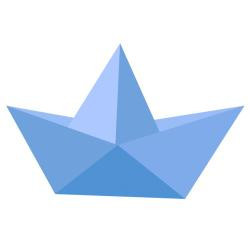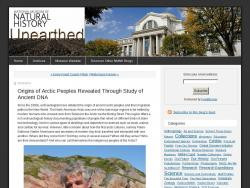Michele Hubert's collections
Weather and Climate (Earth and Space Systems)-- Lesson Plans and Information
<p>What does the weather do to the ocean currents?</p>
<p>Ocean water and currents affect the climate. It takes a greater amount of energy to change the temperature of water than land or air; water warms up and cools off much slower than land or air does. As a result, inland climates are subject to more extreme temperature ranges than coastal climates, which are insulated by nearby water. Over half the heat that reaches the earth from the sun is absorbed by the ocean's surface layer, so surface currents move a lot of heat. Currents that originate near the equator are warm; currents that flow from the poles are cold.
</p>
<p><strong>The Great Ocean Conveyor Belt</strong>
</p>
<p>The great ocean conveyor belt is an example of a density-driven current. These are also called thermohaline currents, because they are forced by differences in temperature or salinity, which affect the density of the water. </p>
<p>The great ocean conveyor belt begins as the coolest of all currents - literally. At the beginning of the conveyor belt:</p>
<p>The Gulf Stream delivers warm, and relatively salty, surface waters north to the Norwegian Sea. There the water gives up its heat to the atmosphere, especially during the frigidly cold winters. The surface waters cool to near freezing temperatures, at which time they become denser than the waters below them and sink. This process continues making cold water so dense that it sinks all the way to the bottom of the ocean.
</p>
<p>During this time, the Gulf Stream continues to deliver warm water to the Norwegian Sea on the surface. The water can't very well pile up in the Norwegian Sea, so the deep cold water flows southward. It continues to flow southward, passing the Equator, until it enters the bottom of the Antarctic Circumpolar current. It then drifts around Africa and Australia, until it seeps northward into the bottom of the Pacific.
</p>
<p>
</p>
<p><br /></p>
 Michele Hubert
Michele Hubert
10
Food Chain -- Lesson Plans and Information
<p>How does fishing, pollution and human activity affect the energy balance in the ocean?</p>
<p>The oceans are an important resource for much of humanity. In the United States alone, about one in six jobs has something to do with the ocean. Unfortunately, while humans depend on the ocean for many different things, their activities can also have a negative effect on the ocean and its wildlife.
</p>
<h3> OVERFISHING OF SPECIES</h3>
<p>One of the biggest effects humans have on the ocean is through fishing. An increasing demand for protein has led to an increase in large-scale fishing operations, and throughout the 20th century, many countries failed to put safeguards into place to prevent overfishing. As a result, the populations of a number of large fish species have dropped by as much as 90 percent from their preindustrial populations. This depletion has led to disruptions in ocean food chains, removing predators and allowing other populations to grow unchecked. As the populations of targeted fish decline, many operations move down the food chain to other species, and over time this can cause significant alterations to marine ecosystems.
</p>
<h3>POLLUTION AND DUMPING</h3>
<p>Human pollution also has a significant effect on the oceans. In the 1980s, travelers passing through the Pacific Ocean began to notice areas containing a high concentration of plastic trash, apparently collected by the ocean's natural currents into one area. The so-called Pacific Trash Vortex may contain up to 1.9 million pieces of trash per square mile, and a similar patch of garbage exists in the northern Atlantic. In addition, oil spills such as the one resulting from the Deepwater Horizon fire in 2010 can contaminate large stretches of the ocean, wiping out entire populations of fish and other species and affecting the regional ecosystem for decades.
</p>
<h3>CARBON EMISSONS</h3>
<p>Air pollution also affects the oceans. As the carbon dioxide in the atmosphere increases, the ocean absorbs some of the excess. The gas reacts with seawater and reduces its pH, increasing the acidity of the water. Since the industrial revolution, the pH of the ocean has decreased by 0.1 pH, representing a 30 percent increase in the acidity of seawater. This affects the growth of animals and plants in the ocean, weakening coral and shellfish.
</p>
<h3>ORGANIC WASTE</h3>
<p>Organic waste dumped into the oceans can have a devastating effect on ecosystems. Excess nutrients from fertilizers and sewage runoff flow into the ocean via rivers, and this sudden abundance of organic material can disrupt the balance of life in affected areas. Organic pollution can cause <a href="http://sciencing.com/algae-blooms-8266246.html">algae blooms</a>, a rapid increase in certain species of microorganisms that may produce toxins or consume the free oxygen in the region, killing off or driving away other species.
</p>
<p>
</p>
<p><br /></p>
 Michele Hubert
Michele Hubert
10
Navigation: Past and Present -- Lesson Plans and Information
<p>By the dawn of the sixteenth century, the ancient art of navigation had begun to develop rapidly in response to new advancements that enabled oceanic explorers to more accurately locate their positions without landmarks, to determine the locations of their discoveries, and to establish routes between the new-found lands and home. Although the relationship of certain heavenly bodies to time of day and terrestrial directions had been known since ancient times, the first two decades of the sixteenth century saw the rigorous application of astronomy and mathematics to navigation.</p>
<p>Navigation is based largely on the spherical coordinates <strong>latitude</strong> -angular distance north or south of the equator - and <strong>longitude</strong> - angular distance east or west of a generally accepted reference location, such as the Greenwich Observatory in London, United Kingdom. Finding longitude requires measuring the angle contained between the meridian of a particular place and some prime meridian, that was located in Greenwich, England, and expressed either in degrees or by some corresponding differences in time. Mechanical time-pieces existed in the Elizabethan era, but until the late eighteenth century they had to be corrected frequently by sun sightings and were therefore almost useless aboard ship. Measuring latitude, on the other hand, does not require an accurate time-piece. Refinement of instruments enabled sixteenth-century mariners to determine latitude with reasonable accuracy. </p>
 Michele Hubert
Michele Hubert
25




